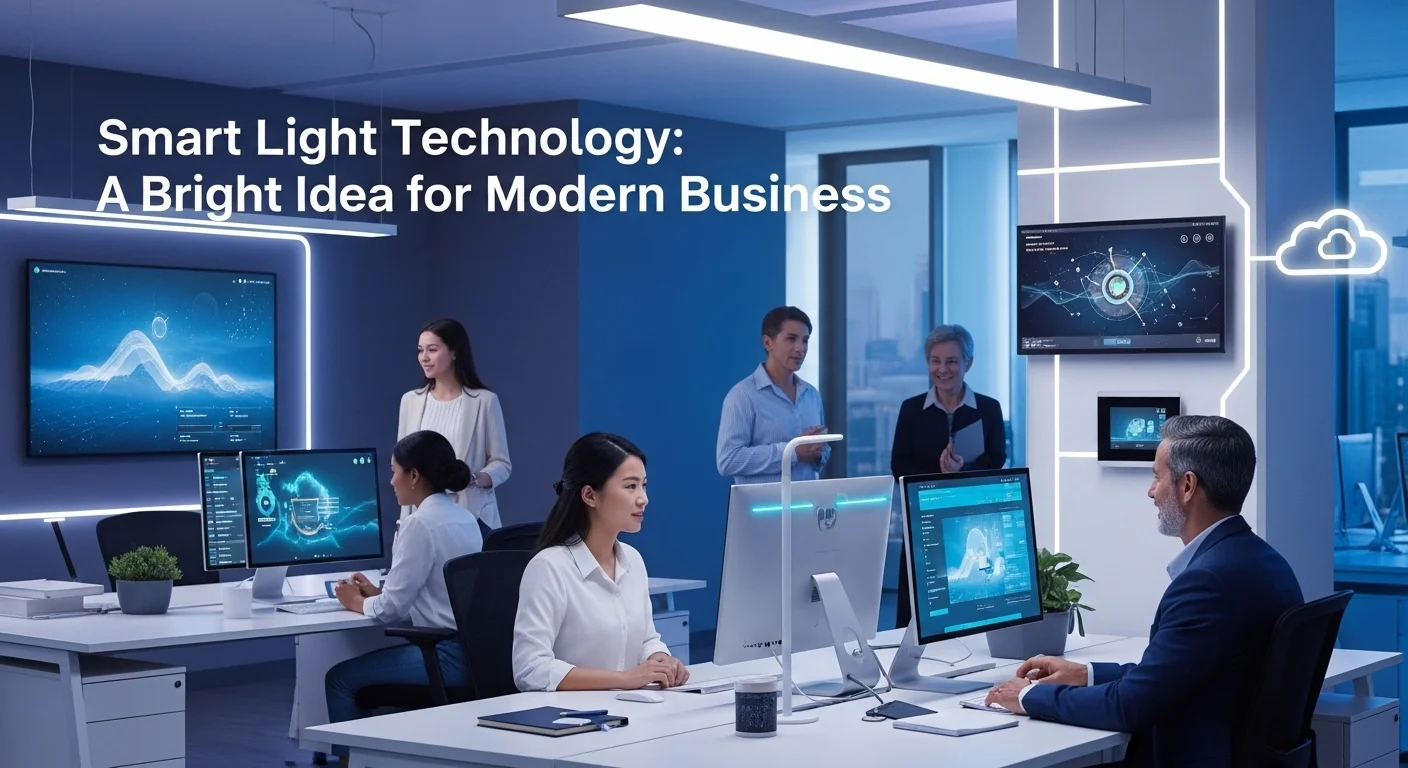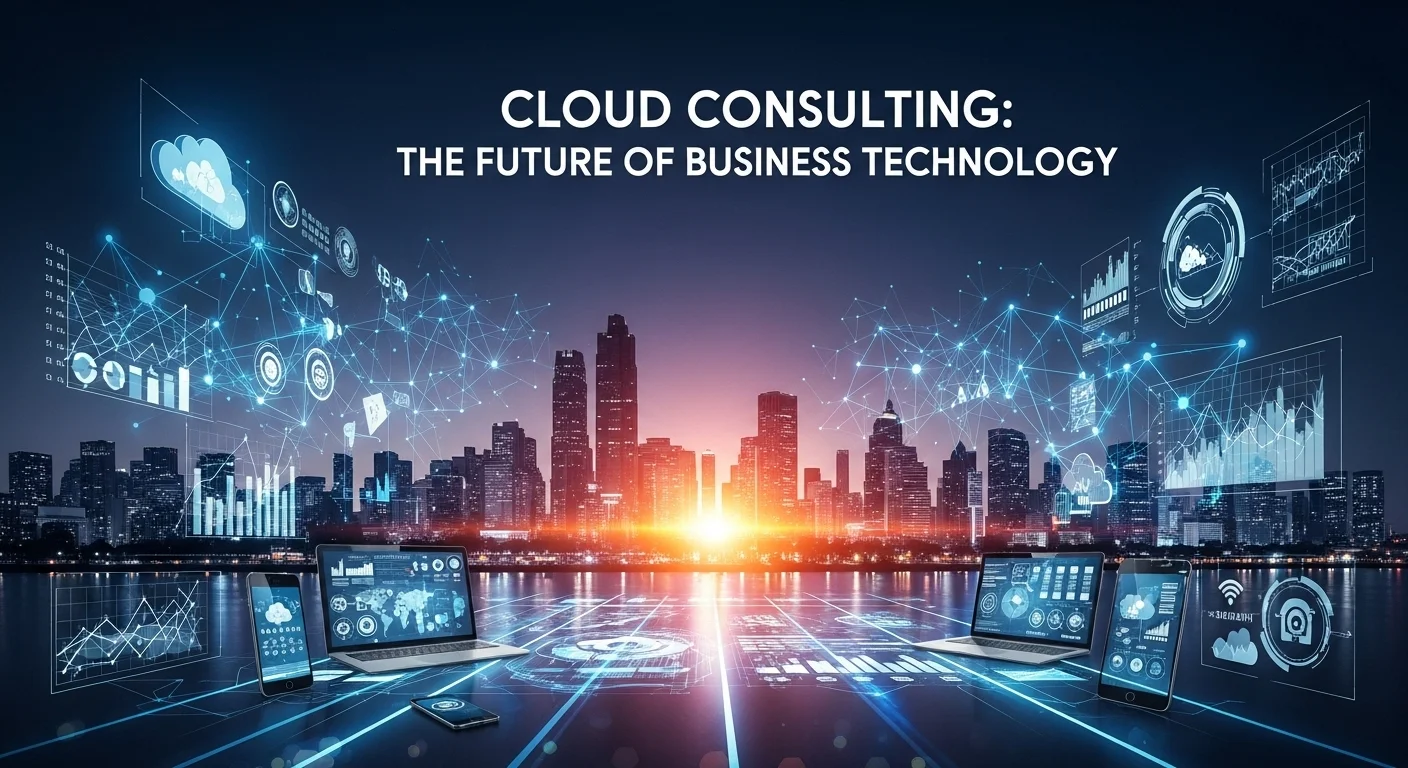Smart Lighting: How It's Changing Our Homes and Businesses

Executive Summary
I remember the first time I set up a smart bulb. It felt like a bit of magic, changing colors from my phone. But over the years, I've seen that 'magic' transform from a simple convenience into a powerful tool that is reshaping entire businesses. Smart lighting isn't just about cool gadgets; it's the backbone of modern smart buildings. For homeowners, it offers a new level of comfort, security, and personality. For businesses, it's a strategic move that cuts energy costs, provides crucial data on how spaces are used, and creates better environments for employees and customers. In this article, I'll break down everything you need to know, drawing from my experience in the field. We'll start with the basics, move on to a complete guide for business solutions, and finish with practical tips to get the most out of your system. This is your straightforward guide to understanding why smart lighting is one of the brightest investments you can make.
Table of Contents
Table of Contents
- What Exactly is Smart Lighting?
- The Tech Behind the Magic: How Smart Lights Talk
- Why Businesses are Switching to Smart Lighting
- A Practical Guide to Smart Lighting for Your Business
- Choosing the Right System: From Home to Enterprise
- Pro Tips for Getting the Most Out of Your Smart Lights
- The Future is Bright: AI, the Cloud, and Beyond
What is Smart Light and why is it important in Technology?
In a world buzzing with new tech, smart lighting has quietly become one of the most impactful innovations in our homes and offices. So, what is it? Simply put, a smart light is a light bulb or fixture that you can control from a device because it's connected to a network. This goes way beyond a simple wall switch. A typical system has three parts: the lights themselves (almost always efficient LEDs), a way to control them (like an app on your phone, your voice, or a remote), and a communication method that lets them all talk to each other. This connectivity is their 'superpower,' turning them from simple objects into an active part of your home or building's ecosystem.
Its importance is huge because, for many people, smart home lights are their very first step into the Internet of Things (IoT). They're easy to install and you see the benefits immediately, making them a perfect entry point. I've seen people start with one bulb in their living room and, before they know it, they have a whole house smart lighting system. This process gets them comfortable with automation and setting 'scenes' (like a 'Movie Night' setting that dims the lights just right), which opens the door to adding smart thermostats, cameras, and more.
The Technological Underpinnings of Smart Lighting
To really get why this is a big deal, you have to look at the tech that makes it possible. The whole thing started with the LED bulb. LEDs are not only way more energy-efficient and long-lasting, but their digital nature makes them perfect for smart control. You can dim them smoothly and change their color instantly without wearing them out.
The 'smart' part comes from how these LEDs communicate. Here are the main ways they 'talk':
- Wi-Fi: Many bulbs for home use connect right to your router. It's simple to set up because you don't need a separate hub. The downside? If you have dozens of them, it can start to clog up your Wi-Fi network.
- Bluetooth Mesh: This is clever. Devices talk directly to each other, creating a 'mesh' network. It extends the range and is great for controlling lights in one area without having to ping your router every time.
- Zigbee and Z-Wave: These are the pros of home automation. They are low-power mesh networks that run on a different frequency, so they don't interfere with your Wi-Fi. They usually need a small 'hub' that plugs into your router, which I find makes for a more stable and reliable system, especially for a large smart house lighting setup.
- Matter: This is the new kid on the block, backed by giants like Apple, Google, and Amazon. Matter's goal is to let devices from different brands work together seamlessly. It's a huge deal because it means you won't have to worry about compatibility when buying new smart light solutions in the future.
Why Smart Lighting is Crucial for Modern Businesses
While home use is fun and convenient, the business world is where smart lighting truly becomes a powerhouse. It’s a core part of creating smart buildings that do more than just provide shelter. Here’s why I see companies making the switch:
1. Serious Energy and Cost Savings: This is the easiest benefit to sell because you can see it on the balance sheet. Commercial lighting uses a ton of electricity. Smart systems attack this waste. Lights turn off automatically in empty rooms or after hours. Sensors can dim lights when there's plenty of sunlight coming through the windows. From my experience on projects, savings of 50% or more on lighting energy bills are very achievable, meaning the system often pays for itself quickly.
2. Data That Drives Smart Decisions: In an office, smart lights are also a grid of sensors. They can tell you exactly how your space is being used. I’ve helped companies analyze this data to discover that certain floors are half-empty, or that conference rooms are always booked but rarely used. This information is gold for managing real estate and making sure you’re not paying for space you don’t need.
3. A Better Experience for People: Good lighting affects mood and productivity. This is called Human-Centric Lighting. A smart system can change the light's color and brightness during the day, providing cool, energizing light in the morning and warmer, calming light in the afternoon to match our natural body clocks. In a store, you can use lighting to make products pop or create a welcoming atmosphere. A better experience for employees and customers is always a win.
4. A Boost in Safety and Security: A well-lit space is a safe space. For example, smart home exterior lighting with motion sensors is a great deterrent. In a large factory, if a security camera detects a problem, the lights in that zone can flash at full brightness, drawing immediate attention and helping the cameras get a clear view. It turns your lighting into an active part of your security system.
5. A Commitment to Sustainability: Today, being green is good business. Slashing energy use helps companies reduce their carbon footprint and meet sustainability goals. It’s something you can proudly tell your customers and employees. Plus, since LEDs last for years, you’re creating far less waste from changing bulbs.
So, smart lighting is much more than an upgrade. It’s a foundational technology that delivers real cost savings, valuable data, and better human experiences. Whether it’s a few smart home lights or a massive commercial installation, it's a key part of building a smarter, more efficient future.

Complete guide to Smart Light in Technology and Business Solutions
Jumping into the world of smart lighting can feel overwhelming, but with the right plan, it's a straightforward process. This guide is my playbook for businesses and tech lovers who want to harness intelligent lighting. We'll cover the technology choices, the business strategy for rolling it out, and how to compare your options without getting lost in the jargon.
Technical Methods and System Architecture
A great smart lighting system starts with choosing the right building blocks. This isn't just about the bulbs; it's about how they communicate and how you'll control them.
1. A Closer Look at Communication Methods:
- Wi-Fi: Perfect for small setups. The main perk is no hub is needed. But a warning for businesses: trying to manage hundreds of Wi-Fi-connected smart light solutions can be a nightmare for your IT department and a security risk if not handled carefully.
- Zigbee/Z-Wave: These are my go-to for larger projects. Because they form a mesh network, the system gets stronger and more reliable as you add more lights. This is ideal for whole house smart lighting or a big office. The hub, which some see as a downside, actually centralizes control and creates a secure barrier between your lights and your main company network.
- Bluetooth Mesh: A very strong option, especially since it's built into every smartphone. It shines in places where you want reliable local control that doesn’t depend on an internet connection to work.
- DALI (Digital Addressable Lighting Interface): This is a professional-grade standard common in commercial buildings. DALI lets you control every single light fixture individually, which is amazing for fine-tuning and getting reports back on bulb health. It's typically a wired system, making it incredibly robust.
- Power over Ethernet (PoE): This is an exciting option for new buildings or major renovations. A single Ethernet cable delivers both power and data to the lights. This simplifies installation and lets your IT team manage the lighting just like any other network device.
2. Control Systems: The Brains of the Operation
Your control platform determines how you interact with your lights. They range from simple to incredibly powerful.
- Home & Small Business Platforms: Brands like Philips Hue have made this space famous with easy-to-use apps that let you create scenes, schedules, and use voice commands. They're a fantastic starting point and even have offerings for small businesses.
- Commercial-Grade Systems: This is where companies like Lutron, Crestron, and Control4 come in. These are robust, scalable systems built for professional installation. They can integrate deeply with everything else in your building, from the AC to the security alarms.
- Building Management System (BMS) Integration: In a large commercial building, your lighting system shouldn't be an island. Integrating it with your BMS is where the real magic happens. For instance, when the lighting sensors see a floor is empty, they can tell the HVAC system to power down, multiplying your energy savings.
Business Techniques for a Successful Rollout
Putting smart light solutions into a business is a strategic project. Here’s how I advise my clients to approach it.
1. Step One: Audit and Assess. Don't Buy Anything Yet. Before you even think about hardware, you need a plan.
- Figure out what lights you have now and how much energy they use.
- Understand how your spaces are actually used. Where do people gather? Which areas are always empty?
- Talk to your team. What do they need? Better light for detailed work? Automation for a huge warehouse? A dynamic feel for a retail space?
2. Define Your Goals and Calculate the ROI: Your assessment should give you clear goals. Maybe it's cutting energy costs by 30% or boosting employee satisfaction. With clear goals, you can calculate the Return on Investment (ROI). Remember to include energy savings, lower maintenance costs (LEDs last forever), and any government rebates you might qualify for.
3. Phased Rollout or Big Bang? You don't have to do it all at once. Starting with one floor or department is a great way to test the waters, get feedback, and build a case for doing more. It’s less disruptive and easier on the budget. A complete overhaul makes more sense during a major renovation.
4. Cybersecurity is Not Optional: I can't stress this enough. Every smart light is a device on your network. Treat them like computers.
- Put them on their own separate network (a VLAN) away from your critical business data.
- Change all default passwords immediately.
- Choose vendors who regularly release security updates. This is crucial.
Comparing Your Options
The market has a solution for every scale and budget.
- For Home and Small Offices: Philips Hue is a fantastic ecosystem. It's user-friendly but powerful, with a huge range of products for indoors and even smart home exterior lighting.
- For Mid-Sized Businesses: Look at systems like Lutron Vive. They are designed for this market, often wireless for easy installation, and give you a great set of tools for management and data analysis.
- For Large Companies and New Buildings: Here you're looking at top-tier systems from Crestron, Lutron, or wired options like DALI and PoE. These are built for maximum reliability and integration. PoE, in particular, is a compelling choice for tech-forward companies that want to merge their building and IT infrastructure.
Ultimately, the best solution comes from understanding the connection between your business goals, the technology, and your budget. By planning carefully and prioritizing security, any organization can implement a smart lighting system that doesn't just light up a room, but provides a platform for a smarter, more efficient business.

Tips and strategies for Smart Light to improve your Technology experience
Putting in smart lights is the first step. Getting the real value comes from using them intelligently and integrating them with your other technology. Whether you're a homeowner looking for that perfect ambiance or a business leader chasing efficiency, these are my go-to strategies to get the most out of your investment.
Best Practices for Homeowners and Enthusiasts
For home use, the goal is comfort, convenience, and security. It's time to move beyond just telling Alexa to turn on the lights.
1. Become a Master of Scenes and Automation: This is where the magic of a smart house lighting system lives. Make your lights work for you.
- Create Scenes for Your Life: I have a 'Cooking' scene that makes my kitchen lights bright and clear. My 'Relax' scene in the living room shifts the lights to a warm, cozy glow. 'Movie Night' dims everything except for a soft blue light behind the TV, which really helps with eye strain.
- Use Time-Based Routines: My 'Wake Up' routine simulates a sunrise by slowly brightening the bedroom lights over 20 minutes. It's a much nicer way to wake up than a blaring alarm. A 'Good Night' command turns off every light in the house at once.
- Let Your Location Do the Work (Geofencing): Use your phone's GPS to trigger actions. My smart home exterior lighting turns on automatically as I pull into the driveway after dark. It also turns off any lights I might have forgotten when it detects I've left home.
2. Make Your Lighting a Security Feature: Smart lights are a surprisingly effective security tool.
- 'Away' Mode: Most systems have a feature that turns lights on and off randomly in the evenings to make it look like someone is home. It’s a simple but powerful deterrent.
- Link to Security Cameras: This is a great trick. If my outdoor camera detects motion, it instantly turns the floodlights on to full blast. This often startles intruders and guarantees a clear video.
3. Tune Your Lights to Your Body Clock: This is Human-Centric Lighting in practice. Use your system's scheduling to sync your whole house smart lighting with your natural rhythm. Keep the light bright and cool-toned during the day to stay energized, and have it automatically shift to a warm, amber light in the evening to help you wind down and prepare for sleep.
Strategies for Business and Commercial Applications
For businesses, the game is about ROI, data, and creating the best possible environment for work and commerce.
1. Use Data to Optimize Your Space: Commercial smart light solutions are data-gathering machines. Those occupancy sensors are incredibly valuable.
- See How Your Office is Really Used: Create heat maps to find out which desks and conference rooms are popular and which are ghost towns. I’ve seen clients use this data to redesign their layouts and save a fortune on real estate they realized they didn't need.
- Optimize Cleaning and Maintenance: Why clean every room every night? Direct your janitorial staff to the high-traffic areas. The system can also alert you when a fixture is about to fail, allowing you to fix it before it becomes a problem.
2. Give People Control (Within Reason): Allowing employees to adjust the light at their own desk (task-tuning) is a proven way to boost satisfaction and productivity. You can still set limits to maintain energy goals. In a warehouse, you can have bright light in the busy packing stations and dimmer light in the storage aisles, saving energy without sacrificing safety.
3. Integrate with Everything: A truly smart building has systems that talk to each other.
- HVAC Systems: If the lighting sensors show a whole floor is empty, they can tell the HVAC to lower the heat or AC, doubling down on energy savings.
- Room Booking Systems: This is brilliant. When a meeting is booked, the lights turn on. If no one shows up after 15 minutes, the lights turn off and the system automatically frees up the room for someone else to book.
The Role of AI, Cloud Computing, and Future Technologies
Smart lighting is only getting smarter, thanks to these advanced technologies.
Artificial Intelligence (AI) and Machine Learning (ML): Don't let the buzzwords scare you. In this context, AI simply means the system can learn your building's rhythms. Instead of a fixed schedule, it can predict when people will arrive and pre-adjust the lighting. It can also spot unusual activity, like lights on in a secure area late at night, and flag it as a potential issue. AI is what takes smart lighting from reactive to predictive.
Cloud Computing: The cloud is what allows a facilities manager to monitor and control the lighting across dozens of buildings from one screen. It's also where all the sensor data is stored and analyzed, enabling those powerful insights we talked about. Crucially, the cloud allows manufacturers to send out vital security updates to keep your system safe.
Quality External Resources: If you really want to dig into the technical side, I always recommend the DesignLights Consortium (DLC). Their website is packed with credible research and lists of qualified products for commercial lighting. It's a fantastic, unbiased resource for making informed decisions.
In the end, getting the most from smart lighting is about seeing it as more than just a light. For homeowners, it’s a tool to personalize and secure your daily life. For businesses, it’s a strategic asset that delivers deep operational insights and financial benefits. By using these strategies and keeping an eye on the future, your investment in smart lighting will be a brilliant one for years to come.
Expert Reviews & Testimonials
Sarah Johnson, Business Owner ⭐⭐⭐
This was a good overview of Smart Light technology, but as a small business owner, I would have loved to see a few more real-world case studies to help me visualize the benefits for my shop.
Mike Chen, IT Consultant ⭐⭐⭐⭐
A solid article on Smart Light. It clarified a lot of things for me as an IT consultant. Some of the deeper tech concepts could be broken down a little more simply, but overall it's very helpful.
Emma Davis, Tech Expert ⭐⭐⭐⭐⭐
Fantastic piece! As a tech specialist, I found this incredibly thorough and well-explained. It covered everything from the basics to enterprise-level strategy on Smart Light. Highly recommended.



